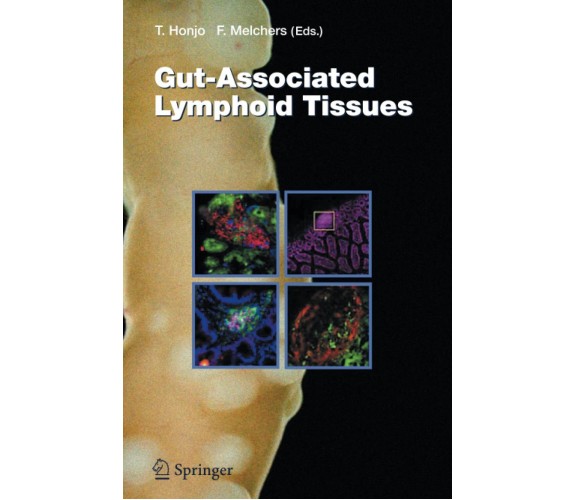Il Tuo Carrello è vuoto
Gut-Associated Lymphoid Tissues
Edizione Inglese di Tasuku Honjo (Autore, a cura di), Fritz Melchers (a cura di)
Editore: Springer Berlin Heidelberg
EAN: 9783642067945
ISBN: 3642067948
Pagine: 224
Formato: Paperback
The intestine is the front line of the confrontation between pathogens and the immune system. However, it is also important to emphasize that we have a symbiotic relationship with innumerable bacteria in the intestine. In the gastrointestinal tract of mammals the lower intestine harbors around 1,000 12 species of anaerobic and aerobic bacteria, in densities up to 10 /mlinthe distal small intestine, the cecum, and the colon. A single layer of epithelial cells of the intestine protects the internal organs of the mammalian host from these bacteria. Below these epithelial cells the gut-associated lymphoid tissues (GALT), organized in Peyer's patches, cryptopatches, and isolated l- phoid follicles, as well as isolated, dispersed single cells in the epithelial layer (intraepithelial lymphocytes) and lamina propria, are composed of T l- phocytes, B lymphocytes, Ig-secreting plasma cells, and antigen-presenting cells such as dendritic cells. The importance of the gut barrier is striking, if we consider that in humans the epithelial surface, behind which the immune system faces and senses the endogenous bacteria, is estimated to be as large as a basketball court. Perhaps not surprising then, the gut contains appr- imately half of all lymphocytes of our immune system. Colonization of the intestine with the ?ora of commensal bacteria induces the development of the GALT, which in turn responds by the development of IgA-secreting plasma cells. Dimeric and multimeric IgAs can traverse the epithelial layer and are released in the gut lumen, where they bind bacteria
Edizione Inglese di Tasuku Honjo (Autore, a cura di), Fritz Melchers (a cura di)
Editore: Springer Berlin Heidelberg
EAN: 9783642067945
ISBN: 3642067948
Pagine: 224
Formato: Paperback
The intestine is the front line of the confrontation between pathogens and the immune system. However, it is also important to emphasize that we have a symbiotic relationship with innumerable bacteria in the intestine. In the gastrointestinal tract of mammals the lower intestine harbors around 1,000 12 species of anaerobic and aerobic bacteria, in densities up to 10 /mlinthe distal small intestine, the cecum, and the colon. A single layer of epithelial cells of the intestine protects the internal organs of the mammalian host from these bacteria. Below these epithelial cells the gut-associated lymphoid tissues (GALT), organized in Peyer's patches, cryptopatches, and isolated l- phoid follicles, as well as isolated, dispersed single cells in the epithelial layer (intraepithelial lymphocytes) and lamina propria, are composed of T l- phocytes, B lymphocytes, Ig-secreting plasma cells, and antigen-presenting cells such as dendritic cells. The importance of the gut barrier is striking, if we consider that in humans the epithelial surface, behind which the immune system faces and senses the endogenous bacteria, is estimated to be as large as a basketball court. Perhaps not surprising then, the gut contains appr- imately half of all lymphocytes of our immune system. Colonization of the intestine with the ?ora of commensal bacteria induces the development of the GALT, which in turn responds by the development of IgA-secreting plasma cells. Dimeric and multimeric IgAs can traverse the epithelial layer and are released in the gut lumen, where they bind bacteria
Scrivi una recensione
Nome:
La tua recensione:
Note: HTML non è tradotto!
Voto: Pessimo Buono
Inserisci il codice mostrato in figura:









